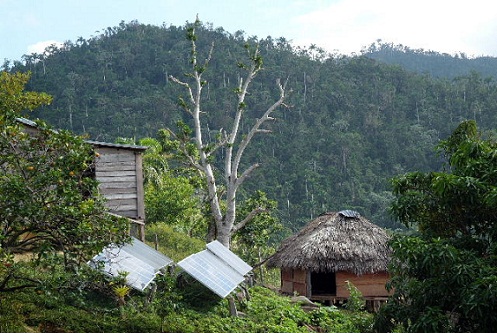Located in the southeast of Cuba, in the heart of the Sierra Maestra, the Turquino National Park it has the highest peak on the island and a very mountainous geography.
There is a profuse flora, exceptional landscape, endemic Sierra Maestra pine forest and tree ferns that reach more than three meters in height. Its fauna, which is generous in reptiles, mollusks and birds, creates a unique spectacle that cannot be easily found elsewhere. Sierra Maestra also has an important historical heritage as the cradle of the Cuban Revolution.
The truth is that with an area of 23 land and marine hectares, the Turquino National Park has become one of the destinations for lovers of nature and adventure in the face of the great variety of species of flora and fauna.
To this we must add that the highest mountains are in the Park as the Pico Real del Turquino with 1 974 meters above sea level. The ascent to this summit is an exciting and unique experience that offers the hiker contact with the wild nature of the area, where the fauna and well-preserved plant formations stand out.
It should be noted that this region presents sudden changes in meteorological variables. In the summer the air temperatures range from 30 degrees, in costs, to 16 in the heights. In the winter it drops to five degrees at Pico Turquino, Pico Cuba and Aguada de Joaquín.
When the climate behaves normally, it is common to see sunny almost all year round in the upper elevations and intermittent fog on the ground after a thousand meters that give a touch of singular beauty to the landscape. The highest rainfall occurs from 600 to 1 meters in height and the annual average of days of rainfall has historically been between 900 and 70, an area with a high performance of this indicator.
The rivers Yara, Santana de la Maestra and Arroyo Naranjo are born on the north slope of the park, and in the south the rivers Tio Pedro, Turquino, La Plata, Jigüe, Palma Mocha (Blunt Palm) and the streams of Las Cuevas (The Cuevas ) and Cabreras.
The fauna is lavish and there are about 80 species among the birds. The jutías conga mammals and the Calabari poaching object have stood out for many years.
Visits to the place are organized in coordination with its administration and Flora and Fauna of Granma. Who goes there have the obligation to complete numerous regulations, among them, it is forbidden to smoke, to create noise, to cut down, to hunt and fish, the trips for the routes must be carried out on the feet accompanied by official guides and never in number greater than 20 people.

